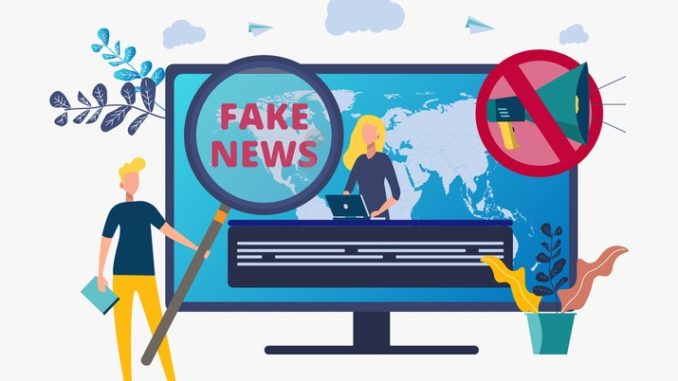
Fake news and scaremongering spread faster than the virus. How can we stay safe and sane during the COVID-19 pandemic despite media frenzy? Amol Rajan talks us through it
This is an edited version of an article first published by the BBC
Megyn Kelly is probably the most famous female journalist in America today (though Oprah Winfrey might object to this description). Kelly was, for years, an anchor on Fox News; her dealings with its boss, the sexual predator Roger Ailes, is the subject of a recent film called, yes, Bombshell. Charlize Theron plays Kelly.
Kelly recently tweeted: “I’m so frustrated right now… that we can’t trust the media to tell us the truth without inflaming it to hurt Trump…that Trump has misled so many times we no longer know when to trust his word…that, even I as a journalist, am not sure where to turn for real info on COVID”.
If trust in the media is your concern, perhaps working for Fox News wasn’t the smartest place to start – as many of Kelly’s, nearly 20,000, respondents pointed out. I’m not one to encourage a social media pile-on; indeed I hardly tweet these days, so corrupting has that platform become for our public domain. But everything about Kelly’s tweet is, at once, remarkable and awful.
It has become fashionable to panic about fake news whenever huge stories emerge. A few days ago 10 Downing Street brought in the UK bosses of major technology firms to make clear they have a role in fighting misinformation.
The evidence suggests there is some of it about. Claims that the virus is a chemical weapon, a giant hoax, or cured by garlic have all probably been seen by millions but, as ever with the – now common – panics about fake news, things are much more complicated than is generally understood.
Much of the fake news is spreading through private forums – whether chat rooms online or on WhatsApp, a platform for encrypted messages. Some of these messages clearly come from disreputable websites, such as the disgraceful InfoWars, which has linked the response to coronavirus with some kind of malign plot by Bill Gates; if you look to Infowars for reliable information, your judgement isn’t up to much.
Badly edited material
Moreover, a significant chunk of the, supposedly fake, news is actually just badly edited material which is then used on social media to confirm the prejudices of those who see it. British Prime Minister Boris Johnson went on ITV’s This Morning and talked about the need for a stiff upper lip. He went on to make clear the latest medical advice and legitimate concerns – but a clip of the first half of his comments went viral, denuded of this context. Cue outrage on – where else but – Twitter. That’s not fake news, it’s just mischievous editing and tedious confirmation bias.
Sadly, it is a regular feature of President Trump’s reign that he himself spouts misinformation, while castigating ‘the fake news media and their partner, the Democrat Party’. In this pandemic, he has excelled himself at this, particularly at the start. I note Kelly accuses him of misleading people rather than lying; that her claim is uncontroversial shows we’ve reached a grim place in the information age.
Perhaps the biggest hoax within the fake news panic, however, is the suggestion that this shows you can’t trust the media. On the contrary – and this is what makes Kelly’s tweet so dispiriting – this crisis has proved exactly how much you can trust the media. There is a clear dichotomy, between authoritative, very widely trusted sources such as the BBC and CNN, and crackpot conspiracy theory sites like InfoWars.
In times of crisis audiences are, in fact, flocking to what has been disparagingly called the ‘mainstream media’. Traffic to the BBC News website is surging to extraordinary levels. Over the past month, 12 February to 11 March, there have been over 575m page views globally of stories about coronavirus. People want trusted information and – unlike Megyn Kelly – know where to turn.
Help!
Conspiracies abound online of course – alas, something about public health scares make them particularly adept at inspiring conspiracy theories. My theory is that this ‘something’ is a combination of the public’s anxiety about their health, and that of loved ones, and the fact that widespread knowledge of the science of viruses is limited. It’s spookily complicated stuff – and people are dying. Help!
Fake news and conspiracies at a time like this are so obviously reprehensible that the more interesting issue is the challenge to news itself. In periods of public panic the role of journalism can at times – and only at times – resemble stenography. Whereas most of the time journalists think of themselves as being in opposition to governments, when the public is scared, journalists and government have incentives that are more aligned – passing on the best information.
In doing this journalists face a secondary challenge. If you give the airwaves over to, say, Boris Johnson, and let him look and sound presidential behind a podium, you might be doing important work of letting his information reach the public, but you, potentially, slip into what feels like propaganda. Therefore the effect, of presenting him as a wartime leader, is something impartial journalists committed to applying scrutiny to power will resile from.
These are the deep, complex issues with which journalists, who are having a decent crisis, must grapple. Megyn Kelly might be right to say that American media are so inflamed they can’t be trusted, though that’s unfair on some. She is right to imply that Trump is not always wedded to accuracy; if she doesn’t know where to turn for real info, however, she can’t be looking very hard.
Don’t forget to follow us on Twitter, or connect with us on LinkedIn!

Be the first to comment